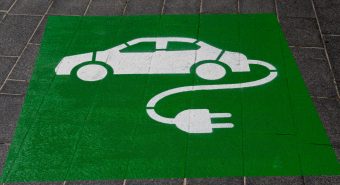
Austria Post has a goal of using 100 percent electric vehicles by 2030. It began delivering mail and parcels with EVs in 2011. It currently owns the largest fleet of electric vehicles in Austria, which serves about 80 percent of all delivery districts throughout the country. It has 2,400 AC and DC charging stations in over 130 depot locations and will be adding more to support its goals. But Austria Post is a delivery service, not a charging network manager. For that, it has chosen the ChargePilot system from The Mobility House. About 10 percent of all electric buses in Europe use the ChargePilot platform to manage charging times and power requirements, and the public transportation system in St. Louis has recently selected The Mobility House to manage the charging of its new electric bus fleet.
In a press release, Paul Janacek, head of fleet operations, says, “Austrian Post has already been using electric delivery vehicles in daily delivery operations since 2011. Since then, the battery-electric drive has proven to be optimal for us. Therefore, it is our goal to further expand this pioneering role and to be emission-free on the last mile by 2030 at the latest. This requires a technically up-to-date and scalable charging management system. We have found ChargePilot and are looking forward to the further expansion of our e-fleet.”
The ChargePilot system enables Austrian Post to automatically take advantage of lower electricity pricing throughout the day and ensure cost-optimized charging across its fleet without investing in expensive infrastructure expansion. The biggest advantage of the system is that it is technology agnostic, meaning it can manage charging equipment from different manufacturers as well as AC and DC equipment. It identifies potential failures across the charging network, allowing time for preventive maintenance before a breakdown occurs. Additionally, the solution can be used to prioritize the charging of certain vehicles to, for example, guarantee the range of individual delivery vehicles as needed. Watch the video at the end of this story to learn more.
More:

Some Austrian Post locations have as many as 70 charging stations. “Especially with such large installations built on both AC and DC charging stations from different manufacturers, you need a system that is compatible with all these components. An open interface architecture is therefore the linchpin for meeting the various requirements and making flexible expansion possible,” explains Greg Hintler, the managing director of the company’s US operations.
“Since 2009, Mobility House has been selected to intelligently integrate electric vehicles into the power grid. It has partnered with several EV charger manufacturers, more than 750 installation companies, 65 energy suppliers, and automakers such as Audi and Tesla. The Mobility House’s unique vendor-neutral and interoperable technology approach to smart charging and energy management has been selected to manage more than 500 commercial installations around the world.”
It is interesting that a nation which purports to be exceptional has decided recently that good old fashioned gasoline power vehicles are good enough for its postal service for the next 20 to 30 years and that electrics will be added only when absolutely necessary. This formerly great nation has selected a defense contractor with little knowledge of electric vehicles to build the next generation vehicles for its postal service. At a time when other nations are pushing hard to lower the carbon footprint of their government fleets, it is content to remain mired in the past. “Curiouser and curiouser,” said Alice.
Source: Clean Technica

